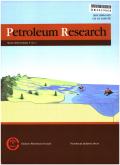Generating extremely low-dimensional representation of subsurface earth models using vector quantization and deep Autoencoder
IF 4
Q1 Earth and Planetary Sciences
引用次数: 0
Abstract
Geological model compression is crucial for making large and complex models more manageable. By reducing the size of these models, compression techniques enable efficient storage, enhance computational efficiency, making it feasible to perform complex simulations and analyses in a shorter time. This is particularly important in applications such as reservoir management, groundwater hydrology, and geological carbon storage, where large geomodels with millions of grid cells are common. This study presents a comprehensive overview of previous work on geomodel compression and introduces several autoencoder-based deep-learning architectures for low-dimensional representation of modified Brugge-field geomodels. The compression and reconstruction efficiencies of autoencoders (AE), variational autoencoders (VAE), vector-quantized variational autoencoders (VQ-VAE), and vector-quantized variational autoencoders 2 (VQ-VAE2) were tested and compared to the traditional singular value decomposition (SVD) method. Results show that the deep-learning-based approaches significantly outperform SVD, achieving higher compression ratios while maintaining or even exceeding the reconstruction quality. Notably, VQ-VAE2 achieves the highest compression ratio of 667:1 with a structural similarity index metric (SSIM) of 0.92, far surpassing the 10:1 compression ratio of SVD with a SSIM of 0.9. The result of this work shows that, unlike traditional approaches, which often rely on linear transformations and can struggle to capture complex, non-linear relationships within geological data, VQ-VAE's use of vector quantization helps in preserving high-resolution details and enhances the model's ability to generalize across varying geological complexities.
利用矢量量化和深度自动编码器生成极低维的地下地球模型表征
地质模型压缩是使大型复杂模型更易于管理的关键。通过减小这些模型的大小,压缩技术可以实现高效的存储,提高计算效率,使在更短的时间内执行复杂的模拟和分析成为可能。这在水库管理、地下水水文学和地质碳储存等应用中尤为重要,在这些应用中,具有数百万网格单元的大型地质模型是很常见的。本研究全面概述了以前在地质模型压缩方面的工作,并介绍了几种基于自编码器的深度学习架构,用于修改的布鲁日场地质模型的低维表示。测试了自编码器(AE)、变分自编码器(VAE)、矢量量化变分自编码器(VQ-VAE)和矢量量化变分自编码器2 (VQ-VAE2)的压缩和重构效率,并与传统的奇异值分解(SVD)方法进行了比较。结果表明,基于深度学习的方法明显优于奇异值分解,在保持甚至超过重建质量的同时获得更高的压缩比。值得注意的是,VQ-VAE2达到了最高的压缩比667:1,其结构相似指数(SSIM)为0.92,远远超过了SVD的10:1压缩比,SSIM为0.9。这项工作的结果表明,与传统方法不同,传统方法通常依赖于线性转换,并且很难捕获地质数据中复杂的非线性关系,VQ-VAE使用矢量量化有助于保留高分辨率细节,并增强模型在不同地质复杂性中的泛化能力。
本文章由计算机程序翻译,如有差异,请以英文原文为准。
求助全文
约1分钟内获得全文
求助全文
来源期刊

Petroleum Research
Earth and Planetary Sciences-Geology
CiteScore
7.10
自引率
0.00%
发文量
90
审稿时长
35 weeks
 求助内容:
求助内容: 应助结果提醒方式:
应助结果提醒方式:


